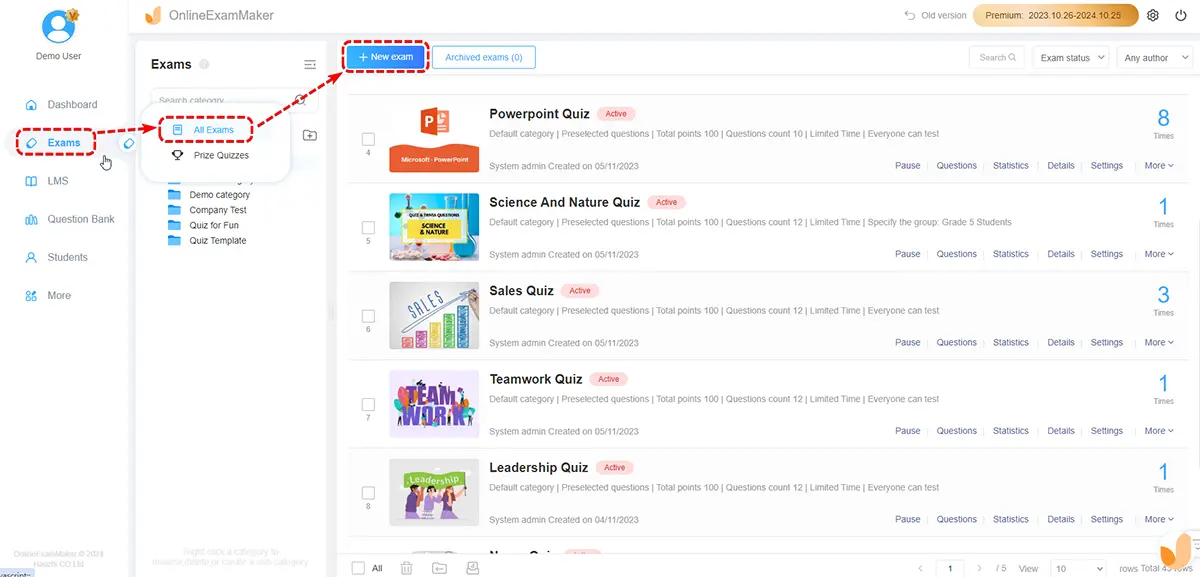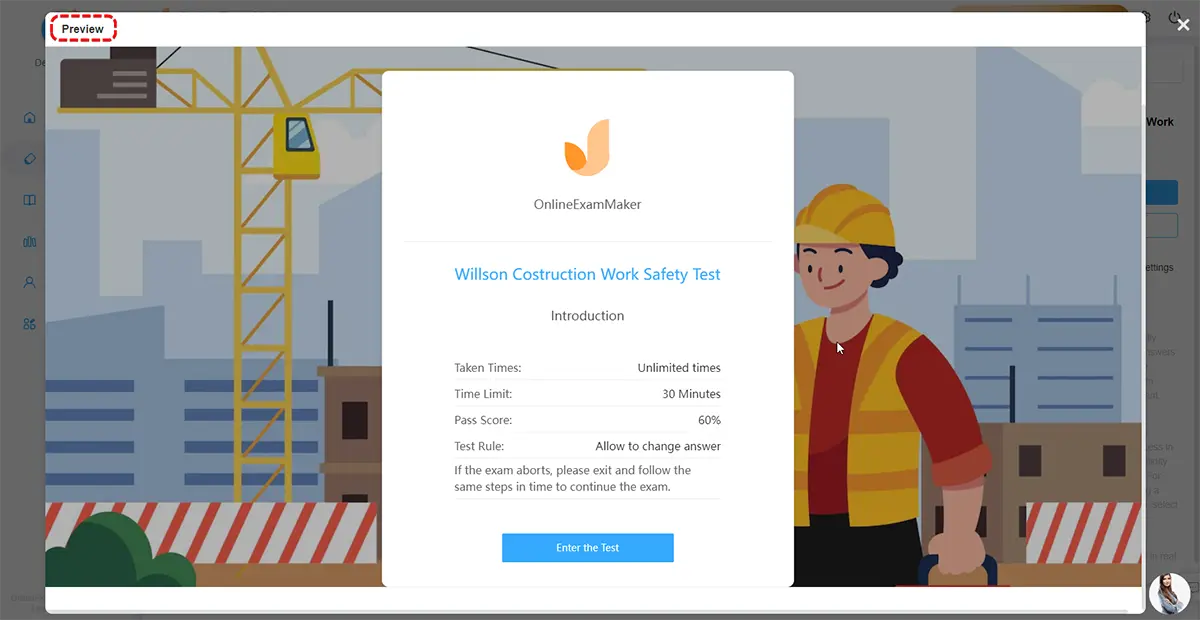Workplace safety is of utmost importance for both employers and employees. It refers to the measures and practices implemented to ensure the physical, mental, and emotional well-being of individuals in a work environment. Here are some key reasons why workplace safety is crucial:
The primary importance of workplace safety is to protect the employees from potential hazards, accidents, injuries, and illnesses. By implementing safety protocols, providing appropriate training, and maintaining a safe working environment, employers can minimize the risks to employees’ health and well-being.
Workplace accidents and injuries not only cause physical harm to employees but also result in financial losses for both individuals and organizations. By focusing on workplace safety, companies can significantly reduce the occurrence of accidents, minimize downtime, and avoid the associated costs of medical expenses, legal issues, and productivity loss.
When employees feel safe and secure in their work environment, their morale and motivation increase. Knowing that their well-being is a priority, employees are more likely to be engaged, productive, and committed to their work. A positive safety culture promotes a sense of trust, loyalty, and job satisfaction among employees.
Workplace safety is not only a moral obligation but also a legal requirement. Governments and regulatory bodies have established laws and standards to protect workers’ rights and enforce safe working conditions. Adhering to these regulations not only ensures legal compliance but also demonstrates an organization’s commitment to ethical practices.
In this article
- Part 1: Create a workplace safety quiz in minutes using AI with OnlineExamMaker
- Part 2: 30 downloadable workplace safety quiz questions & answers
- Part 3: Download workplace safety questions & answers for free
- Part 4: How to make a workplace safety quiz with video & photos in OnlineExamMaker

Part 1: Create a workplace safety quiz in minutes using AI with OnlineExamMaker
When it comes to ease of creating a workplace safety knowledge assessment, OnlineExamMaker is one of the best AI-powered quiz making software for your institutions or businesses. With its AI Question Generator, just upload a document or input keywords about your assessment topic, you can generate high-quality quiz questions on any topic, difficulty level, and format.
Overview of its key assessment-related features:
● AI Question Generator to help you save time in creating quiz questions automatically.
● Assign the created exam to a group containing multiple candidates to assess particular learners directly.
● Instantly scores objective questions and subjective answers use rubric-based scoring for consistency.
● Simply copy and insert a few lines of embed codes to display your online exams on your website or WordPress blog.
Automatically generate questions using AI
Part 2: 30 workplace safety quiz questions & answers
1. Which of the following is an essential component of workplace safety?
a) Regular staff meetings
b) Proper ventilation
c) Team-building exercises
d) Lunch breaks
Answer: b) Proper ventilation
2. What does the term “PPE” stand for in the context of workplace safety?
a) Personal Protective Equipment
b) Prevention of Potential Emergencies
c) Protective Product Evaluation
d) Primary Prevention Exercises
Answer: a) Personal Protective Equipment
3. What should you do if you notice a hazard in the workplace?
a) Ignore it and continue working
b) Report it to your supervisor or manager
c) Share it on social media
d) Take a photo and post it online
Answer: b) Report it to your supervisor or manager
4. Why is it important to keep work areas clean and organized?
a) It looks better for visitors
b) It improves productivity
c) It prevents accidents and injuries
d) It makes the boss happy
Answer: c) It prevents accidents and injuries
5. What should you do if you encounter a fire in the workplace?
a) Panic and run
b) Attempt to extinguish the fire yourself
c) Activate the fire alarm and evacuate
d) Continue working and ignore the fire
Answer: c) Activate the fire alarm and evacuate
6. What is the purpose of safety signs in the workplace?
a) To decorate the walls
b) To provide directions to the nearest restroom
c) To indicate potential hazards and provide safety instructions
d) To entertain employees during breaks
Answer: c) To indicate potential hazards and provide safety instructions
7. Which of the following is an example of a physical hazard in the workplace?
a) Loud noises
b) Stressful deadlines
c) Uncomfortable chairs
d) Chemical spills
Answer: d) Chemical spills
Just to let you know
Sign up for a free OnlineExamMaker account to create an interactive online quiz in minutes – automatic grading & mobile friendly.
8. What is the purpose of an emergency evacuation plan?
a) To create a sense of urgency among employees
b) To test the fire alarm system
c) To provide a blueprint for safe and orderly evacuation during emergencies
d) To simulate emergency situations for training purposes
Answer: c) To provide a blueprint for safe and orderly evacuation during emergencies
9. What does the acronym “OSHA” stand for?
a) Occupational Safety and Health Administration
b) Occupational Standard for Hazard Assessment
c) Organization for Safety and Hazard Awareness
d) Office of Security and Health Administration
Answer: a) Occupational Safety and Health Administration
10. Which of the following is an example of an ergonomic hazard in the workplace?
a) Slippery floors
b) Excessive noise
c) Poorly designed workstations
d) Inadequate lighting
Answer: c) Poorly designed workstations
11. What is the purpose of a safety data sheet (SDS)?
a) To record employee attendance
b) To provide information on hazardous chemicals
c) To schedule safety training sessions
d) To document workplace accidents
Answer: b) To provide information on hazardous chemicals
12. Which of the following is NOT a type of fall protection equipment?
a) Safety harness
b) Safety goggles
c) Guardrails
d) Safety nets
Answer: b) Safety goggles
13. What does the term “LOTO” stand for in the context of workplace safety?
a) Lock Out, Tag Out
b) Limited Office Time Only
c) Log of Training
Operations
d) Lost Object Tracking Order
Answer: a) Lock Out, Tag Out
14. What should you do if you suspect a gas leak in the workplace?
a) Light a match to identify the source
b) Open all windows and doors to ventilate the area
c) Report it immediately and evacuate the premises
d) Ignore it and continue working
Answer: c) Report it immediately and evacuate the premises
15. Which of the following is an example of a biological hazard in the workplace?
a) Chemical spills
b) Slippery floors
c) Bloodborne pathogens
d) Excessive noise
Answer: c) Bloodborne pathogens
Part 3: Download workplace safety questions & answers for free
Download questions & answers for free
16. What is the purpose of regular safety training sessions?
a) To waste employees’ time
b) To improve employee morale
c) To keep employees up-to-date on safety procedures
d) To assign blame in case of accidents
Answer: c) To keep employees up-to-date on safety procedures
17. Which of the following is an example of a fire prevention measure?
a) Blocking emergency exits
b) Storing flammable materials near heat sources
c) Regularly inspecting and maintaining fire extinguishers
d) Smoking in designated areas only
Answer: c) Regularly inspecting and maintaining fire extinguishers
18. What should you do before using any machinery or equipment in the workplace?
a) Bypass safety features for increased efficiency
b) Ignore warning labels and instructions
c) Inspect it for any damage or defects
d) Ask a coworker to demonstrate its use
Answer: c) Inspect it for any damage or defects
19. What does the acronym “CPR” stand for?
a) Cardiopulmonary Resuscitation
b) Cardiovascular Physical Rehabilitation
c) Centralized Procurement and Resource
d) Comprehensive Personnel Review
Answer: a) Cardiopulmonary Resuscitation
20. What should you do if you witness a coworker experiencing an electric shock?
a) Touch the person to provide immediate relief
b) Pour water on the person to extinguish any flames
c) Call for emergency medical assistance and do not touch the person
d) Ignore it and continue working
Answer: c) Call for emergency medical assistance and do not touch the person
21. What is the purpose of regular equipment maintenance?
a) To increase the workload of maintenance personnel
b) To waste time and resources
c) To identify and repair potential hazards or malfunctions
d) To create job security for maintenance personnel
Answer: c) To identify and repair potential hazards or malfunctions
22. Which of the following is an example of a safety hazard related to electrical equipment?
a) Using equipment with frayed power cords
b) Keeping the office temperature too low
c) Having uncomfortable office chairs
d) Using outdated software
Answer: a) Using equipment with frayed power cords
23. What should you do if you are unsure about the proper use of a chemical or substance in the workplace?
a) Experiment and see what happens
b) Ask a coworker for advice
c) Read the safety data sheet (SDS) or consult the manufacturer’s instructions
d) Ignore it and hope for the best
Answer: c) Read the safety data sheet (SDS) or consult the manufacturer’s instructions
Pro Tip
Want to assess your employees online? Create an online quiz for free!
24. What is the purpose of a safety committee in the workplace?
a) To organize company parties and events
b) To assign blame in case of accidents
c) To promote a safety culture and address safety concerns
d) To compete in interdepartmental sports competitions
Answer: c) To promote a safety culture and address safety concerns
25. Which of the following is an example of a hazard associated with working at heights?
a) Exposure to loud noises
b) Exposure to extreme temperatures
c) Slips and trips on uneven surfaces
d) Falling from ladders or scaffolds
Answer: d) Falling from ladders or scaffolds
26. What is the purpose of personal hygiene practices in the workplace?
a) To waste time
b) To impress colleagues and supervisors
c) To prevent the spread of germs and diseases
d) To avoid wearing uniforms or protective equipment
Answer: c) To prevent the spread of germs and diseases
27. What should you do if you are working alone in the workplace and feel unwell?
a) Keep working and ignore the symptoms
b) Inform your coworkers and continue working
c) Take a break and rest until you feel better
d) Leave the premises and seek medical attention
Answer: d) Leave the premises and seek medical attention
28. What is the purpose of safety inspections in the workplace?
a) To assign blame and reprimand employees
b) To create additional paperwork for management
c) To identify and correct potential hazards or safety violations
d) To disrupt work routines and lower productivity
Answer: c) To identify and correct potential hazards or safety violations
29. Which of the following is an example of a safety precaution when working with hazardous chemicals?
a) Not wearing personal protective equipment (PPE)
b) Eating and drinking in the work area
c) Storing chemicals in unmarked containers
d) Properly storing and labeling chemicals
Answer: d) Properly storing and labeling chemicals
30. What should you do if you are unsure about the safety procedures for a specific task?
a) Guess and hope for the best
b) Ask a coworker who seems knowledgeable
c) Skip the task and move on to something else
d) Consult your supervisor or a safety professional
Answer: d) Consult your supervisor or a safety professional
Part 4: How to make a workplace safety quiz with video & photos in OnlineExamMaker
Step 1: SignUp or login to OnlineExamMaker >

Step 2: Edit questions

Prepare questions, you can download the question template and upload them to OnlineExamMaker question bank. You can also create a new question in OnlineExamMaker Question Editor, then add video, images into the question to deliver interactive quiz experience.
Step 3: Create a new quiz

Create a new quiz, the edit quiz information. You can add questions to quiz in bulk from Question Bank, then set quiz settings.
Step 5: Publish and share your quiz
